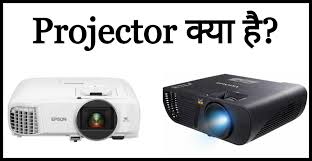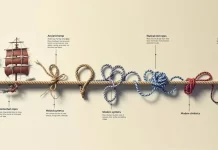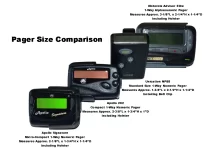History of Projector in Hindi (प्रकाशक) in Hindi, is a captivating tale of human innovation, blending art, science, and technology to display images and videos on surfaces. From ancient shadow plays to modern laser *prakaashaks*, projectors have evolved over centuries, transforming entertainment, education, and business. While no single *vynakti* (व्यक्ति) can be credited as the founder, key inventors and milestones shaped this technology. Below is an 800-word exploration of the projector’s history, its first iterations, and year-by-year development, mixing Hindi and English terms.
Ancient Beginnings: The Roots of Projection
The concept of projecting images predates modern technology, originating with *chhaya natya* (छाया नाट्य) or shadow play in prehistoric times. By 840 CE, records of *Wayang* shadow puppetry in Indonesia and similar traditions in China (1000 CE) and India show how light and shadows created moving images. These early *prakaashan* (प्रकाशन) methods used no devices but laid the groundwork for projectors. In ancient India, *chhaya natya* was a cultural art form, using leather figures to project stories on cloth screens, illuminated by firelight. *Yeh pehla kadam tha prakaashak ki duniya mein* (यह पहला कदम था प्रकाशक की दुनिया में).
The camera obscura, a natural optical phenomenon, emerged as a precursor to projectors around 500 BC. Described by Chinese philosopher Mozi, it projected inverted images through a small hole onto a surface, used later in Europe for art and astronomy. *Yeh technology prakaashak ke vikas ka mool thi* (यह टेक्नोलॉजी प्रकाशक के विकास का मूल थी).

The First *Prakaashak*: The Magic Lantern
The first true projector, the *magic lantern* or *jaadui deep* (जादुई दीप), was invented by Dutch scientist Christiaan Huygens in 1659. It used a concave mirror, a candle or oil lamp, and a glass slide with painted images to project enlarged visuals onto a wall. Huygens’ sketches of a skeleton removing its skull demonstrate its early use, though he considered it frivolous and did not publicize it. By the 18th century, *jaadui deep* became popular for entertainment and education, projecting *phantasmagoria* shows with ghostly moving images. *Yeh prakaashak ne lokon ko hairaan kiya* (यह प्रकाशक ने लोगों को हैरान किया).
19th Century: Birth of Motion Picture *Prakaashaks*
The 19th century saw rapid advancements. In 1756, Swiss physicist Leonhard Euler developed the *episcope* or *opaque prakaashak* (अपारदर्शी प्रकाशक), which projected non-transparent objects like books using reflected light. In 1872, Henry Morton enhanced this for large audiences, projecting clear images in the Philadelphia Opera House using an oxyhydrogen lamp. *Is prakaashak ne bade audience ko prabhavit kiya* (इस प्रकाशक ने बड़े ऑडियंस को प्रभावित किया).
The first movie projector, the *Zoopraxiscope*, was created by British photographer Eadweard Muybridge in 1879. It projected sequential images from rotating glass disks, creating the illusion of motion, a key step toward cinema. In 1888, French inventor Louis Le Prince patented a combined camera-projector, filming *Roundhay Garden Scene*, the earliest known motion picture. *Yeh cinema ke liye ek krantikari kadam tha* (यह सिनेमा के लिए एक क्रांतिकारी कदम था).
In 1895, the Lumière Brothers, Auguste and Louis, invented the *Cinématographe*, a portable device combining camera, projector, and printer. Their public screening in Paris marked the birth of cinema, projecting films like *Sortie de l’usine Lumière*. *Yeh prakaashak ne cinema ko janm diya* (यह प्रकाशक ने सिनेमा को जन्म दिया).
Year-by-Year Development (History of Projector in Hindi)
1659**: Christiaan Huygens invents the *magic lantern* (जाादुई दीप).
1756**: Leonhard Euler develops the *episcope* for opaque projections.
1800s**: *Phenakistoscope* and *Zoetrope* introduce motion illusion.
1872**: Henry Morton’s *opaque prakaashak* projects for large audiences.
1879**: Eadweard Muybridge’s *Zoopraxiscope* projects moving images.
1888**: Louis Le Prince films and projects *Roundhay Garden Scene*.
1895**: Lumière Brothers’ *Cinématographe* launches public cinema screenings.
1895**: Woodville Latham’s *Eidoloscope* projects films in the US.
1896**: Thomas Armat’s *Vitascope*, marketed by Edison, popularizes cinema.
1923**: Kodak introduces 16mm film, making *prakaashaks* accessible for home use.
1932**: Kodak launches 8mm film and projectors for amateur filmmakers.
1930s**: Cathode Ray Tube (CRT) *prakaashaks* emerge for early TVs.
1950s**: Slide *prakaashaks* by Kodak dominate classrooms and homes.
1960s**: Roger Appledorn’s overhead *prakaashak* revolutionizes education.
1968**: Gene Dolgoff begins developing LCD *prakaashak* technology.
1973**: Kodak’s *Ektasound* adds sound to Super 8mm film projectors.
1989**: Epson announces the first digital *prakaashak*, VPJ-700.
1990s**: Digital Light Processing (DLP) by Texas Instruments enhances image quality.
2007**: Appotronics introduces ALPD laser *prakaashak* technology.
2013**: 4K laser *prakaashaks* debut in cinemas.2020s**: Short-throw and smart *prakaashaks* gain popularity for home use.
20th Century: From Analog to Digital
The 20th century brought *prakaashak* advancements through film formats like 16mm and 8mm, introduced by Kodak in 1923 and 1932, respectively, enabling home movie projections. The 1950s saw slide *prakaashaks* become classroom staples, while Roger Appledorn’s overhead *prakaashak* in the 1960s allowed real-time annotations. *Yeh prakaashak shiksha ke liye game-changer tha* (यह प्रकाशक शिक्षा के लिए गेम-चेंजर था).
The 1970s introduced CRT *prakaashaks*, using electron beams for TV projections. In 1968, Gene Dolgoff began developing LCD *prakaashaks*, launching Projectavision in 1988, which set the stage for digital projection. By 1989, Epson’s VPJ-700 marked the first digital *prakaashak*, followed by Texas Instruments’ DLP technology in the 1990s, using micro-mirrors for sharper images. *Digital prakaashak ne quality ko naye star par le gaya* (डिजिटल प्रकाशक ने क्वालिटी को नए स्तर पर ले गया).
Modern Era: Laser and Smart *Prakaashaks*
The 21st century introduced laser *prakaashaks*, with Appotronics’ ALPD technology (2007) offering vibrant colors and energy efficiency. 4K *prakaashaks* (2013) and short-throw models revolutionized cinemas and home theaters. Smart *prakaashaks* with Android OS and compact designs, like WEMAX Go Advanced, cater to modern needs. *Yeh prakaashak ghar aur office mein har jagah hain* (ये प्रकाशक घर और ऑफिस में हर जगह हैं).
Cultural Impact and Conclusion
In India, *prakaashaks* transformed *Bollywood* screenings, making cinema accessible in rural areas. From *chhaya natya* to 4K laser *prakaashaks*, projectors have shaped storytelling and education. No single *vynakti* invented the projector, but pioneers like Huygens, Muybridge, and the Lumière Brothers laid the foundation. *Prakaashak ki kahani innovation aur creativity ki kahani hai* (प्रकाशक की कहानी इनोवेशन और क्रिएटिविटी की कहानी है).
Projector History: From *Chhaya Natya* to Modern *Prakaashak*
Ancient Beginnings
Prehistory–840 CE**: *Chhaya natya* (shadow play) in India, Indonesia (*Wayang*), and China uses light and shadows for storytelling.
500 BC**: Camera obscura described by Mozi, projecting inverted images through a pinhole.
The First *Prakaashak*
1659**: Christiaan Huygens invents the *magic lantern* (जाादुई दीप), projecting painted glass slides using a candle and concave mirror.
1756**: Leonhard Euler’s *episcope* projects opaque objects like books.
19th Century: Motion Picture *Prakaashaks*
1800s**: *Phenakistoscope* and *Zoetrope* create motion illusion, inspiring film projectors.
1872**: Henry Morton’s *opaque prakaashak* projects for large audiences in Philadelphia.
1879**: Eadweard Muybridge’s *Zoopraxiscope* projects moving images from glass disks.
1888**: Louis Le Prince films *Roundhay Garden Scene*, an early motion picture.
1895**: Lumière Brothers’ *Cinématographe* launches public cinema screenings.
1895**: Woodville Latham’s *Eidoloscope* introduces film projection in the US.
1896**: Thomas Armat’s *Vitascope*, marketed by Edison, popularizes cinema.
20th Century: Analog to Digital
1923**: Kodak’s 16mm film enables home movie *prakaashaks*.
1932**: Kodak’s 8mm film and projectors support amateur filmmakers.
1930s**: CRT *prakaashaks* used for early TV projections.
1950s**: Kodak’s slide *prakaashaks* dominate education and homes.
1960s**: Roger Appledorn’s overhead *prakaashak* revolutionizes presentations.
1968**: Gene Dolgoff begins LCD *prakaashak* development.
1973**: Kodak’s *Ektasound* adds sound to Super 8mm projectors.
1989**: Epson’s VPJ-700, the first digital *prakaashak*.
1990s**: Texas Instruments’ DLP technology enhances image quality.
21st Century: Laser and Smart *Prakaashaks*
2007**: Appotronics’ ALPD laser *prakaashak* improves color and efficiency.
2013**: 4K laser *prakaashaks* debut in cinemas.
2020s**: Short-throw and smart *prakaashaks* with Android OS gain popularity.
Conclusion
From *chhaya natya* to laser *prakaashaks*, projectors have evolved through collective innovation, transforming *Bollywood*, education, and global entertainment. *Yeh ek krantikari safar hai* (यह एक क्रांतिकारी सफर है).
History of Projector Projector in Hindi Projector founder in hindi Projector kis ne banaya Projector kaise bana first Projector in hindi







